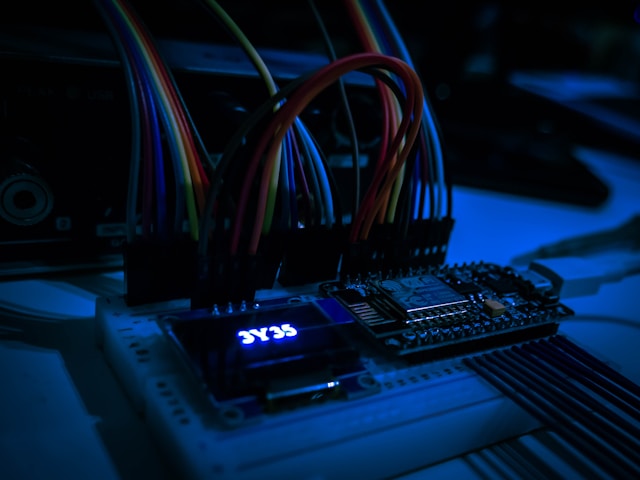Knowing how Variable Frequency Drives (VFDs) work is important because they are widely used in AC motor-driven applications, such as variable frequency drive for motor control, due to their various characteristics.

Compared to conventional motor drives, VFD has more functionality and operational capabilities. In addition to adjustable speed control, variable frequency drives offer protections such as phase, under and over voltage protection. The VFD’s software and interface options allow the user to control the motors at the desired level.
What is Variable Frequency Drives?
A variable frequency drive is often referred to as an inverter. A VFD may also be called an AC drive, adjustable frequency drive, variable speed drive, variable speed drive (VSD), variable frequency inverter (VFI), or micro drive. Despite the name, a VFD is a type of motor controller that drives and controls an electric motor. A VFD controls motor speed and torque to meet the needs of the application by changing the frequency and voltage distribution. Frequency is directly linked to the RPMs of the motor, The higher the frequency, the higher the number of RPMs.
Working principle of Variable Frequency Drives
Two key features of a variable frequency drive are adjustable speed and soft start/stop capabilities. These two features make the VFDs a powerful controller for controlling AC motors. VFD mainly consists of four sections, they are rectifier, intermediate DC link, inverter and controlling circuit.
Rectifier
It is the first stage of variable frequency drive. It converts AC power from the mains into DC power. Depending on the application such as four-quadrant operation of the motor this section can be unidirectional or bidirectional. It uses diodes, SCRs, transistors and other electronic switching devices.
DC Bus
DC power from the rectifier section is supplied to the DC link. Capacitors and inductors in this section smooth against ripples and store DC power. The main function of a DC link is to receive, store and supply DC power.
Inverter
This category includes electronic switches like transistors, IGBT. It receives DC power from the DC link and converts it into AC which is supplied to the motor. It uses modulation techniques like pulse width modulation to change the output frequency to control the speed of the induction motor.
Control circuit!
It consists of a microprocessor unit and performs various functions such as controlling, configuring drive settings, fault conditions and interfacing communication protocols. It receives a feedback signal from the motor as a current speed signal and regulates the ratio of the voltage to the frequency to control the motor speed.
Advantages of using VFDs
1.Reducing energy consumption and energy cost
If an application does not need to run at full speed, energy costs can be reduced by controlling the motor with a VFD, which allows the speed of the motor-driven equipment to match the load requirements. Electric motor systems account for more than 65% of industry’s power consumption today. Upgrading motor control systems with VFDs can reduce energy consumption in a facility by up to 70%. Additionally, using VFDs can improve product quality and reduce manufacturing costs. This consolidates the return on investment for VFD installations.
2.Smooth and efficient motor control
Running your motors at the most efficient speed for your application can reduce errors, thereby increasing production levels and increasing revenue. For example, smooth-acting VFDs for conveyors and belts eliminate start-up jerks and allow for greater efficiency.
3.Extend equipment life and Reduce maintenance
Ensuring optimal motor control helps equipment last longer and reduces downtime due to maintenance. As the VFD optimizes the control of the frequency and voltage of the motor, the VFD provides better protection to your motor from electrical thermal loads, phase protection, under voltage, over voltage and other issues. Starting a load with a VFD protects the motor or driven load from “instant shock” across the starting line; Soft start eliminates large amounts of belt, gear and bearing wear. And an added benefit is the reduction and/or elimination of water hammer through smooth acceleration and deceleration cycles.
Features of VFDs
EMI filters, built-in
Wide operating temperature range
Braking units – built-in
Heavy-duty overload capacity
Coated PCBs: Reduces dust intrusion damage.
RS485 Modbus RTU fieldbus, built-in
Sensor less control: vector, torque, volts per Hz
Mounting options: wall, flange, rail
Optional communication and I/O extension features
